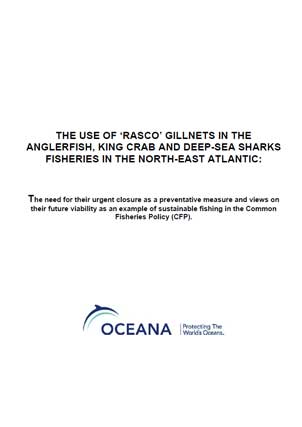Report | May 27, 2010
The use of ‘rasco’ gillnets in the anglerfish, king crab and deep-sea sharks fisheries in the North-East Atlantic.
Every day, more than 6,000 kilometres of fixed gillnets (‘rasco’ or anglerfish nets) are deployed in the waters of the North-East Atlantic to catch anglerfish, deep-sea red crab and deep-sea sharks.
The poor selectivity of these nets, together with the length of time they are left in the water, means that many of the creatures they catch are rotten or in a damaged state when they are brought in. This has meant that up to 71% of the anglerfish ctach has had to be discarded.
The catches of deep-sea sharks by these fleets, particularly Portuguese dogfish and leafscale gulper shark, have contributed to the depletion of these stocks, which are currently on the verge of collapse.
Most of the vessels involved in this fishery are registered in the United Kingdom, Germany and even under flags of convenience, but almost all the boats belong to Spanish companies and operate out of Galician ports.
A single vessel can use up to 400 kilometres of net, which is 36 times net size permitted in Spain. This size is much higher than what a fishing boat is able to efficiently manage, and so part of the net ends up being lost at sea, generating more than 1,000 kilometres of wastage and “ghost nets” every year.
Despite the danger of overexplotation of some stocks of anglerfish, the quotas proposed by scientists have been repetedly ignored by politicians and, particularly in the last three years, a volume of anglerfish has been caught that is far higher that what is permitted and regarded as sustainable.


